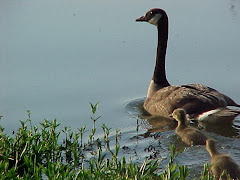 Christmas 2009 will be remembered on Lake Conway for the 11+ inches of rain that fell on Christmas Eve and Christmas Day. Poor monitoring of the lake level, late response in opening the dam floodgates, and high winds all played a part in creating serious problems for all of the lakefront homeowners (and many who live well back from the lakeside.) Huge snags, driven by the wind and waves, battered the shoreline and structures. Floodwaters entered homes and closed access roads.
Christmas 2009 will be remembered on Lake Conway for the 11+ inches of rain that fell on Christmas Eve and Christmas Day. Poor monitoring of the lake level, late response in opening the dam floodgates, and high winds all played a part in creating serious problems for all of the lakefront homeowners (and many who live well back from the lakeside.) Huge snags, driven by the wind and waves, battered the shoreline and structures. Floodwaters entered homes and closed access roads.The water is still high, but the lake is mostly back in its bed in this photo.
Our place is on (comparatively) high ground, so the house was safe, although the heat/air ducts in the crawl space were damaged. A storage shed was floated off its foundation blocks. We lost a lot of soil and grass around the big trees, leaving roots exposed. Massive amounts of debris and detritus were floated in, covering the ground, patio, and drive. Because the damage was largely wind-driven, our insurance covered some of the repair costs. The shed was demolished and hauled off.
 The dock was renovated--actually an improvement.
The dock was renovated--actually an improvement.The fencing was replaced (upgraded to chain link,) and relocated to a previous fence-line, further out from the house. Last week, with the water low, big earth-movers brought in shale, rock, and topsoil, stabilizing the shoreline and installing riprap for erosion control, then repairing the damage done by the big equipment, which had left ruts and gouges everywhere.
Despite the heat and humidity, we raked, seeded, and mulched the bare soil, putting the sprinkler on the planted areas.

It's not the best time to be seeding, but the final work had to wait for conditions to be right. Some long-awaited rains have helped, and the new grass was up in a week.
 The eroded areas under the big oaks and along the old fence-line had received topsoil and sod back in mid-Spring. Big turtles from the lake come ashore and dig nests for their eggs--not the most helpful thing, but part of the territory. (Crows, raccoons, skunks, and who knows what else dig the eggs up and devour them; the survival rate must be extremely low.)
The eroded areas under the big oaks and along the old fence-line had received topsoil and sod back in mid-Spring. Big turtles from the lake come ashore and dig nests for their eggs--not the most helpful thing, but part of the territory. (Crows, raccoons, skunks, and who knows what else dig the eggs up and devour them; the survival rate must be extremely low.)In the upper part of this shot, you can see part of a big snag that was pulled out of the water. The cedar is incredibly dense and heavy. After some work with the chain-saw, we are hauling the logs to the woodpile for future campfires--once it cools off, that is.




No comments:
Post a Comment